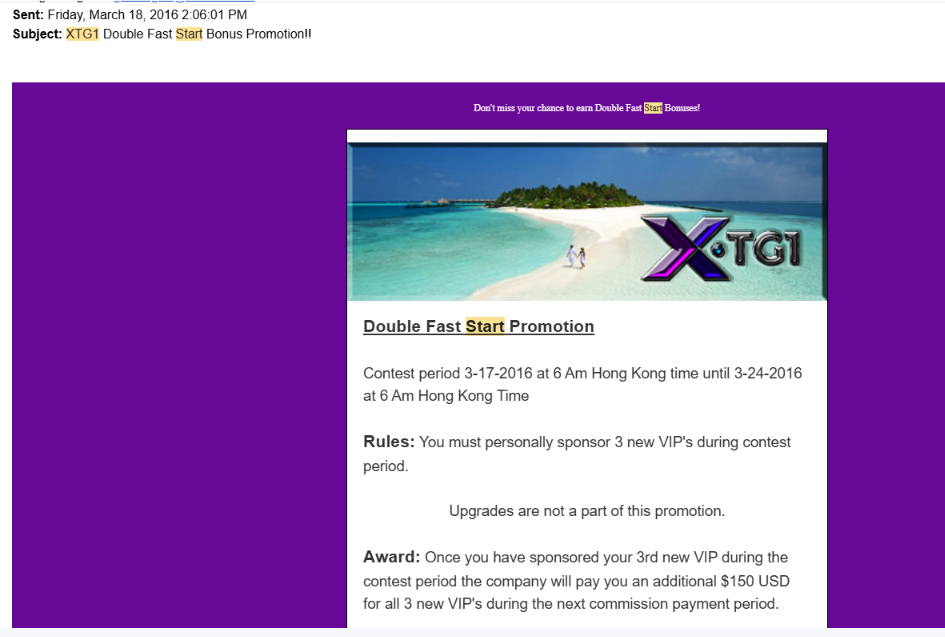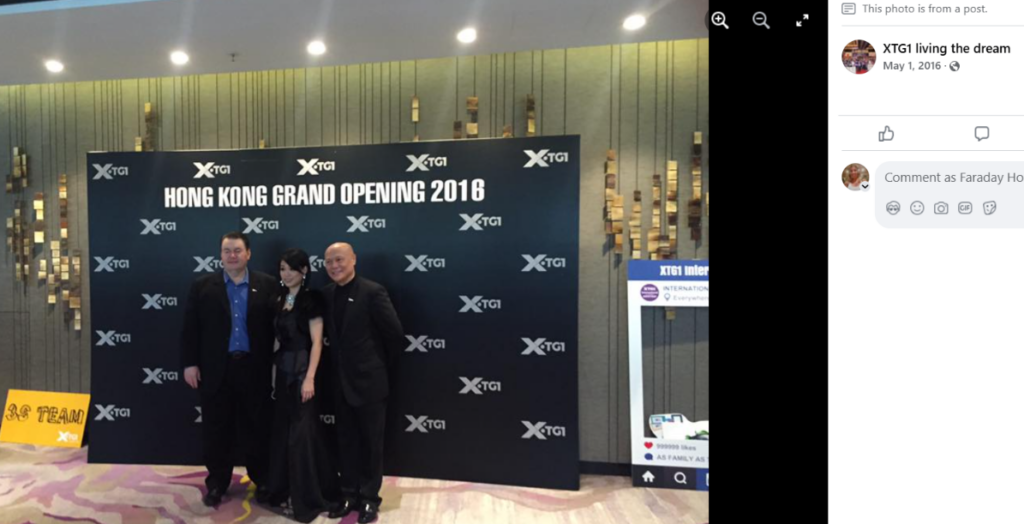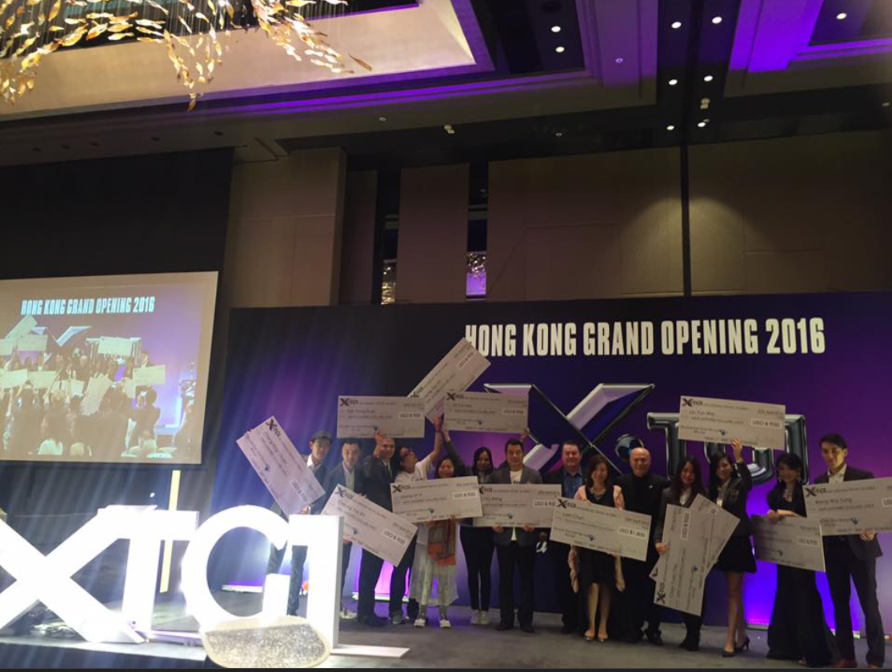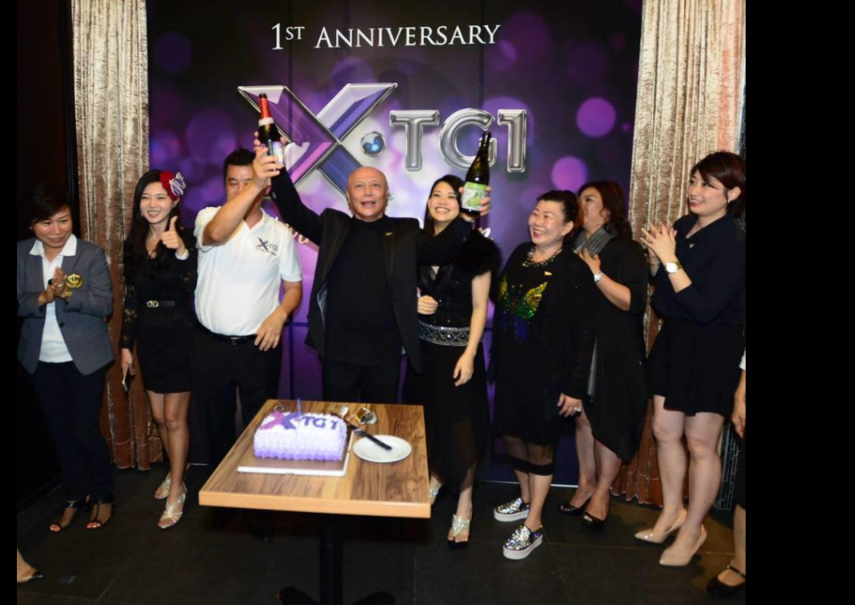How can the government claim to have proven a “data-driven” pyramid scheme with “golden data” that was 27 months outside the indictment timeline for Infinity Two Global (I2G) after I2G was already closed?
How is it possible for data from an entirely unrelated company to be presented as I2G data on all its spreadsheets?
How can the government assert that it did not suborn perjury when it allowed Jerry Reynolds to testify that he stopped working with Rick Maike entirely in January 2015, and that I2G had already closed by January 2015? (Doc 498 #4249, 50)
The government was aware that the dates were “hidden” in the data provided to the defense just one week before the trial. Reynolds testified that he did not verify these dates. The prosecution described the dates as “indecipherable,” requiring technical measures to render them readable. This situation left the defense unable to discover that the “I2G data” actually extended to March 2017—specifically, in documents 101i, 101g1, 101b, 101a, 101d, and 101f—and did not belong to I2G. Instead, this two-year span of data pertained to Xtg1, a Hong Kong-based entity that continued operations after I2G had closed.
The government introduced emails and data at trial that were outside the indictment timeline. Reynolds testified that I2G was closed by January 2015 (Doc 498 #4249, 4250). Despite his testimony, the government presented seven spreadsheets containing data from 27 months after I2G had ceased operations. Furthermore, no data used in the trial was uncompromised.
Key witness Anzalone testified that I2G was closed in 2015 and that Maike had moved on to other plans (Doc 504 #4494, 4495). It is significant that non-I2G data was deliberately used to support a case predicated on this data, and false statements made by key witnesses regarding the data were never corrected.
The government was aware of Xtg1, as nine meetings were held with Anzalone, who was associated with Xtg1. In fact, the Anzalone family provided prosecutors with copies of their hard drives just before the trial. Anzalone’s emails confirm their involvement with Xtg1 and its launch in 2015.
The government deliberately omitted references to Xtg1 in two exhibits (Exhibit 692) presented to the jury, suggesting an intentional effort to conceal the co-mingling of Xtg1, which compromised and invalidated all data from 2015 to 2017. The government had a responsibility to inform the court about these errors and to correct the false testimony provided by four key witnesses, as outlined in U.S. v. Napue.
Hosseinipour’s demand letter from November 2015 mentions Maike’s launch of Xtg1 (Exhibit 692), and Logan’s email from October 2015 also refers to the Xtg1 launch in 2015. Agent Sauber acknowledged Xtg1 during Maike’s sentencing hearing.
The government knew that two years’ worth of Xtg1 data was included in seven spreadsheets that served as crucial evidence against the defendants. They had ample opportunities to disclose data errors and rectify the false statements made by these four key witnesses who misrepresented the data. Instead, the government chose to deliberately misrepresent the I2G data to uphold its narrative, thereby compromising justice in the process. Their failure to correct the false statements made by their key witnesses constituted violations of Napue.
False Statements by Reynolds
BY MR. WISENBERG:
Q. You continued — correct me if I’m wrong — to — just a
technical question I want cleared up. You continued to do work
for Finance Ventures even after the initial raid by the FBI and
you being visited by the FBI; is that correct? (The FBI Raid occurred in January 2015)
A. I did not.
Q. No. I mean, did your company —
A. No.
Q. — do that? Okay.
A. No. At that time, I2G/G1E had gone away, so they were no
longer an active client. Then we got contacted by the FBI.
Q. Say the last part.
A. Then we got contacted by the FBI. So they were already
done, and then the FBI called.
Could Reynolds have confused the dates or the companies involved? Regardless, the testimonial was crucial. The government was aware that it was a false statement and was obligated to correct it. They certainly knew they could not ethically present XTG1 data as I2G data in a criminal case.
Email records held by the government indicate that Reynolds continued to collaborate with Rick Maike and manage the new company’s XTG1 data until March 2017. Attached email records show that wire payments were accepted to prepare for the “new project” in July 2015 and continued throughout the launch of XTG1.
All seven spreadsheets relied upon at the trial exceeded the I2G indictment timeline by 27 months. The government obscured the dates on these spreadsheets so that the defense would not recognize that the entire data set was tainted by that 27-month discrepancy. Additionally, the defense was unaware that 28 million dollars in I2G commission payments had been excluded.
If the government did not realize they had pulled data from another company initially, they certainly must have recognized it at some point during the trial.
Objections were raised regarding an entry outside the indictment timeline. This entry was misrepresented as a suspicious late joiner in the I2G conspiracy, identified as “Dreamlyte Enterprises,” when it was actually an XTG1 entry. The government presented this data as related to the I2G conspiracy, and the Court overruled the objection. Notably, Hosseinipour and Barnes were not part of XTG1, meaning they could not have been involved in an ongoing conspiracy.
XTG1 was incorporated in Hong Kong on September 10, 2015. An email dated October 29, 2015, from Angela Leonard to Rick Maike, Richard Anzalone, Susan Anzalone, and Anthony Fong informed them that the XTG1 email was operational.
Emails exchanged between Angela and Jerry Reynolds demonstrate their continued collaboration well beyond January 2015, which was around the time of the I2G raid referenced. These emails indicate false statements made by Reynolds, which the government was aware of and was required to correct according to the precedent set in Napue.
Furthermore, emails from Angela to Jerry Reynolds in September 2015 indicate that Rick held 100 XTG1 applications and had engaged UnionPay for payments in China. An email from August 24, 2015, between Angela Reynolds and Jerry Reynolds’s team discusses software needs and pricing for the “new project.”
There is no credible way for the government to claim ignorance regarding the fact that XTG1 contaminated 27 months of its data, nor can they assert that this issue is insignificant.
The corrupted data extended to Xtg1 sales numbers and product packages that were not a part of I2G. Three XTG1 travel packages were falsely represented as I2G Packages. I2G did not have the VIP, Executive and Senior Executive Travel Platforms. As the sales numbers in the millions of dollars were being represented as losses, the false representation were especially prejudicial.
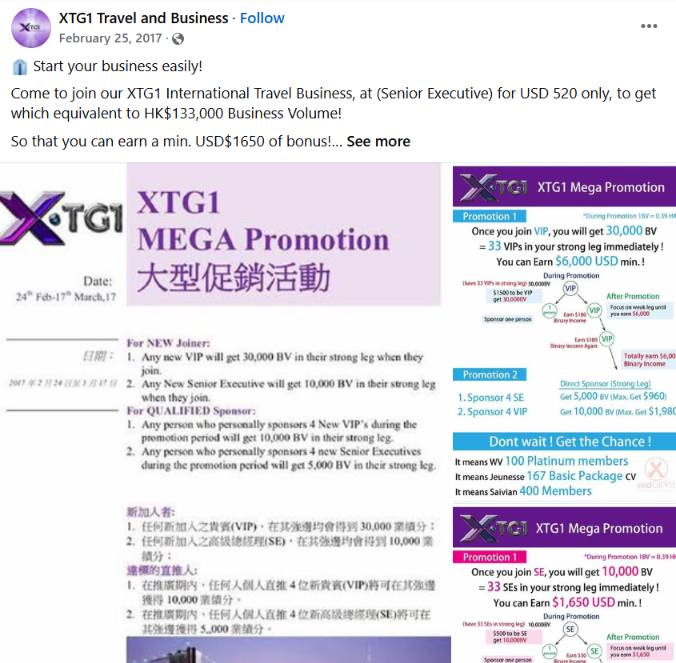
The government also “knowingly” presented non-I2G data as I2G data. Two years of critical data belonged to XtG1, a separate company that launched after i2G had closed. This included over $4 million in sales and 4000 distributor enrollments from XtG1. The government knew about xtg1, per its own exhibits and witness testimony. It knew that key seven spreadsheets admitted to the jury included data up to March 2017, two years After I2G ceased all operations.
Significantly, The tainted data extended to XTG1 sales volume and product packages. The government cross examined REynolds on three XTG1 packages and the corresponding sales volume with these packages and represented it to the jury as I2G. There is no way the government can credibly argue the entire trial was not tainted.
